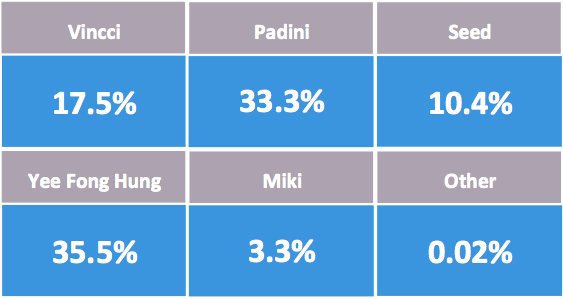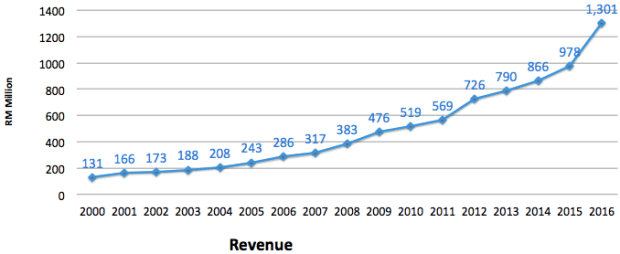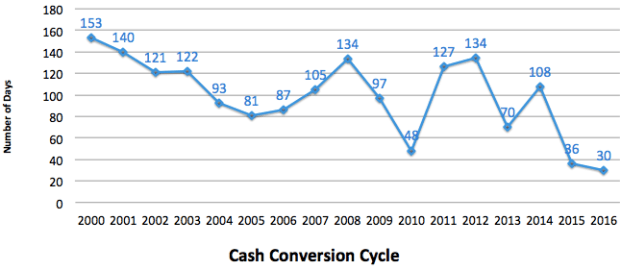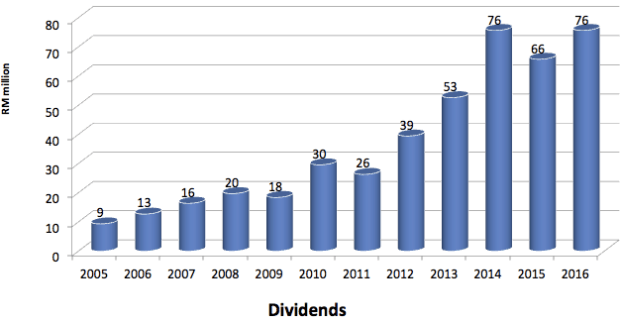The Fifth Person: 6 Things You Need To Know About Padini Holdings
In my previous article, I shared three easy ways to find investment ideas fast. One of the ways to find new investment ideas is through the day-to-day observation of the things around you —which was how I came across Padini Holdings Berhad (Bursa: 7052) on a business trip to Malaysia.
I was walking around Mid Valley Megamall observing the retail stores and I realised that certain stores had more shopper traffic compared to the rest; Padini was one of them. As is my habit, I Googled to find out if Padini was public-listed (it was!) and I dug in to find out more.
And so, here are six things I found out about Padini Holdings:
1. Padini is a fashion company that owns multiple fashion brands

Padini is one of the most successful homegrown Malaysian fashion companies. It owns the fashion brands Padini, Vincci, Tizio, PDI, Seed, Brand Outlet and P&Co.
From the table above, the highest revenue contributor for Padini is Yee Fong Hung which holds the Brand Outlet and P&Co brands. The next highest contributors are Padini and Vincci which account 33.3% and 17.5% of total revenue respectively.
2. Consistent growth in revenue

Padini’s revenue has been growing consistently for the past 16 years despite new entrants like Uniqlo and H&M in Malaysia. This track record speaks for itself on how the management has done a great job in fighting off competition.
3. Growth is coming from Padini and Brand Outlet

Vincci used to be the company’s largest revenue contributor but it has since been overtaken by Padini and Brand Outlet which has been a hit with Malaysian consumers. In 2016, Brand Outlet become the company’s largest revenue contributor for the for the first time. Moving forward, we should see more growth from the Padini and Brand Outlet brands.
4. Falling cash conversion cycle

Cash conversion cycle (CCC) indicates how fast the company turns their inventory into cash. A decreasing CCC is a good sign; Padini now just takes 30 days to turn their inventory to cash compared to 153 days in 2000. Padini was able to reduce its CCC significantly when management introduced an IT system to manage inventory and track customer buying behaviour.
5. Cash rich and low debt

A company that is cash rich is always an investor favourite. For the past 16 years, Padini has always been in a net cash position. The most recent six years has seen the company’s cash position increasing tremendously while debt level remains low.
6. Growing dividends

Padini has been paying increasing dividends the past 16 years. Even during tough periods like the 2008/09 subprime crisis and the 2011 euro debt crisis, Padini was still able to pay a dividend to shareholders. The way Padini is able to grow its revenue during a crisis and pay a dividend speaks volumes about the company’s financial strength and market positioning.
This article originally appeared on The Fifth Person, authored by Victor Chng, an equity investor and co-founder of The Fifth Person. His investment articles have been published on The Business Times BTInvest section and Business Insider. He has also been featured multiple times on national radio on 938LIVE for his views and opinions on how to invest successfully in the stock market. Victor is also the co-author of Value Investing in Growth Companies published by Wiley, Inc. The book can be found in all major book stores worldwide and on Amazon.com, Barnes & Noble and Apple’s iBooks. On a personal note, Victor represented Singapore in the 2008 TAFISA World Games in Busan, South Korea and was the 2008 IFMA World Muay Thai Championships bronze medalist, kicking some serious ass along the way.


